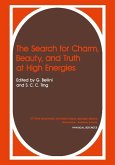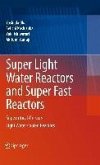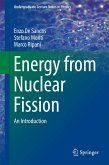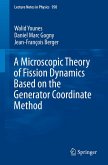The revised second edition of this established text offers readers a significantly expanded introduction to the effects of radiation on metals and alloys. It describes the various processes that occur when energetic particles strike a solid, inducing changes to the physical and mechanical properties of the material. Specifically it covers particle interaction with the metals and alloys used in nuclear reactor cores and hence subject to intense radiation fields. It describes the basics of particle-atom interaction for a range of particle types, the amount and spatial extent of the resulting radiation damage, the physical effects of irradiation and the changes in mechanical behavior of irradiated metals and alloys.
Updated throughout, some major enhancements for the new edition include improved treatment of low- and intermediate-energy elastic collisions and stopping power, expanded sections on molecular dynamics and kinetic Monte Carlo methodologies describing collision cascade evolution, new treatment of the multi-frequency model of diffusion, numerous examples of RIS in austenitic and ferritic-martensitic alloys, expanded treatment of in-cascade defect clustering, cluster evolution, and cluster mobility, new discussion of void behavior near grain boundaries, a new section on ion beam assisted deposition, and reorganization of hardening, creep and fracture of irradiated materials (Chaps 12-14) to provide a smoother and more integrated transition between the topics. The book also contains two new chapters. Chapter 15 focuses on the fundamentals of corrosion and stress corrosion cracking, covering forms of corrosion, corrosion thermodynamics, corrosion kinetics, polarization theory, passivity, crevice corrosion, and stress corrosion cracking. Chapter 16 extends this treatment and considers the effects of irradiation on corrosion and environmentally assisted corrosion, including the effects of irradiation on water chemistry and the mechanisms of irradiation-induced stress corrosion cracking.
The book maintains the previous style, concepts are developed systematically and quantitatively, supported by worked examples, references for further reading, end-of-chapter problem sets and an online solutions manual. Aimed primarily and students of materials sciences and nuclear engineering, the book will also provide a valuable resource for academic and industrial research professionals.
Updated throughout, some major enhancements for the new edition include improved treatment of low- and intermediate-energy elastic collisions and stopping power, expanded sections on molecular dynamics and kinetic Monte Carlo methodologies describing collision cascade evolution, new treatment of the multi-frequency model of diffusion, numerous examples of RIS in austenitic and ferritic-martensitic alloys, expanded treatment of in-cascade defect clustering, cluster evolution, and cluster mobility, new discussion of void behavior near grain boundaries, a new section on ion beam assisted deposition, and reorganization of hardening, creep and fracture of irradiated materials (Chaps 12-14) to provide a smoother and more integrated transition between the topics. The book also contains two new chapters. Chapter 15 focuses on the fundamentals of corrosion and stress corrosion cracking, covering forms of corrosion, corrosion thermodynamics, corrosion kinetics, polarization theory, passivity, crevice corrosion, and stress corrosion cracking. Chapter 16 extends this treatment and considers the effects of irradiation on corrosion and environmentally assisted corrosion, including the effects of irradiation on water chemistry and the mechanisms of irradiation-induced stress corrosion cracking.
The book maintains the previous style, concepts are developed systematically and quantitatively, supported by worked examples, references for further reading, end-of-chapter problem sets and an online solutions manual. Aimed primarily and students of materials sciences and nuclear engineering, the book will also provide a valuable resource for academic and industrial research professionals.
Dieser Download kann aus rechtlichen Gründen nur mit Rechnungsadresse in A, B, BG, CY, CZ, D, DK, EW, E, FIN, F, GR, HR, H, IRL, I, LT, L, LR, M, NL, PL, P, R, S, SLO, SK ausgeliefert werden.









